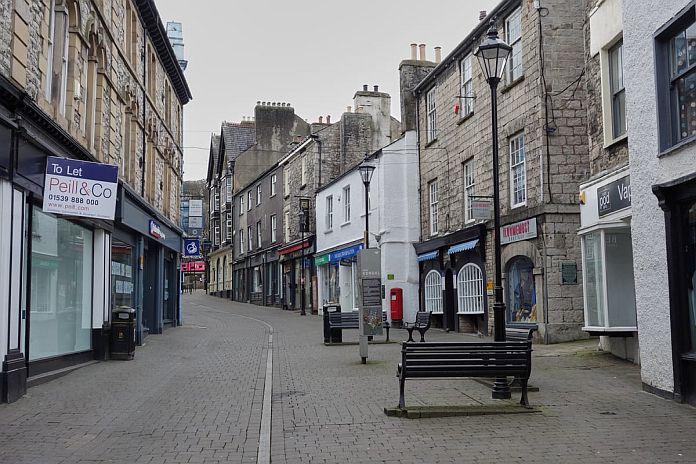By PYMNTS
The COVID-19 numbers are bad almost every place one looks in the United States and Europe. It isn’t much of an exaggeration to say that on the eve of the holiday season, leaders, politicians and medical experts worldwide are preparing for the worst.
“We’re in for a whole lot of hurt. It’s not a good situation,” Dr Anthony Fauci, the country’s leading infectious-disease expert, told The Washington Post. “All the stars are aligned in the wrong place as you go into the fall and winter season, with people congregating at home indoors. You could not possibly be positioned more poorly.”
Across the pond in the United Kingdom, prime minister Boris Johnson imposed another strict national lockdown aimed at halting the coronavirus’ spread. The move came as UK COVID-19 cases passed the one million mark and the country’s death toll reached 46,555 after weeks of sharp upticks.
According to the U.K. Office for National Statistics, one in 100 people in England have COVID-19. At the start of the month, one in 200 were infected, and in July, that figure was as low as one in 2,300.
The current UK lockdown is somewhat less strict than its counterpart in March. Schools and universities will be allowed to continue to operate, but all bars and restaurants must close except for takeout and delivery. All non-essential businesses, including gyms and hair salons, must close as well.
The move has reportedly caused major infighting within Johnson’s Conservative government, as various members of the prime minister’s party have expressed a preference to keep restrictions local and tiered instead of subjecting the entire country to lockdowns.
But such limited measures were insufficient to head off the UK’s surging case count or death toll, which at present stands as the highest on the European continent. And the government advised that if infection rates persist at current levels, the British National Health Service’s bed capacity will be exhausted by early November.
The lockdown going into place this week is intended to last through December 2, but there is already talk among members of Johnson’s cabinet that it could extend into 2021 depending on case counts. If the moves “re-bends the curve” of cases downward, reopening can begin. If not, the lockdown could persist.
“We will always take a decision in the national interest, based on evidence,” UK cabinet minister Michael Gove told British media over the weekend. “We want to be in a position where we can — and I believe that this is likely to be the case — have an approach where if we bring down the rate of infection sufficiently, we can reduce measures nationally and also reduce measures regionally.”
Consumers are more ready than ever to stay digital
Concerns are growing that given the international surge in cases, shutdowns starting up in the UK and across Europe might be longer than anyone is saying yet. But consumers have increasingly made up their minds that no matter what any government agency says, they’re in lockdown mode anyway for the long haul.
According to PYMNTS data, the time when consumers thought the pandemic would be a short-term event has long passed. US consumers PYMNTS surveyed in March thought the outbreak would last about five months, but their experiences since then have persuaded them otherwise.
PYMNTS’ latest survey in September found that consumers on average believe the pandemic has another eleven months to go. They’re not expecting to go back to anything like their pre-pandemic lives until sometime autumn 2021.
Whether or not they’re allowed out by local authorities before then seems largely beside the point, at least here in the US Only six percent of consumers surveyed reported that a lift of government restrictions would be the primary thing to push them back out into the world. For most survey respondents (58 percent), the big motivator isn’t going to be anything but a COVID-19 vaccine becoming widely available.
Until then, many have gone digital — and in many regards are quite comfortable to ride out the pandemic until it’s eradicated by a vaccine. That means whether governments in the UK or around the world officially put lockdowns in place could be secondary to the reality that as case counts go up, consumers seem increasingly comfortably locking themselves down and waiting COVID-19 out.





